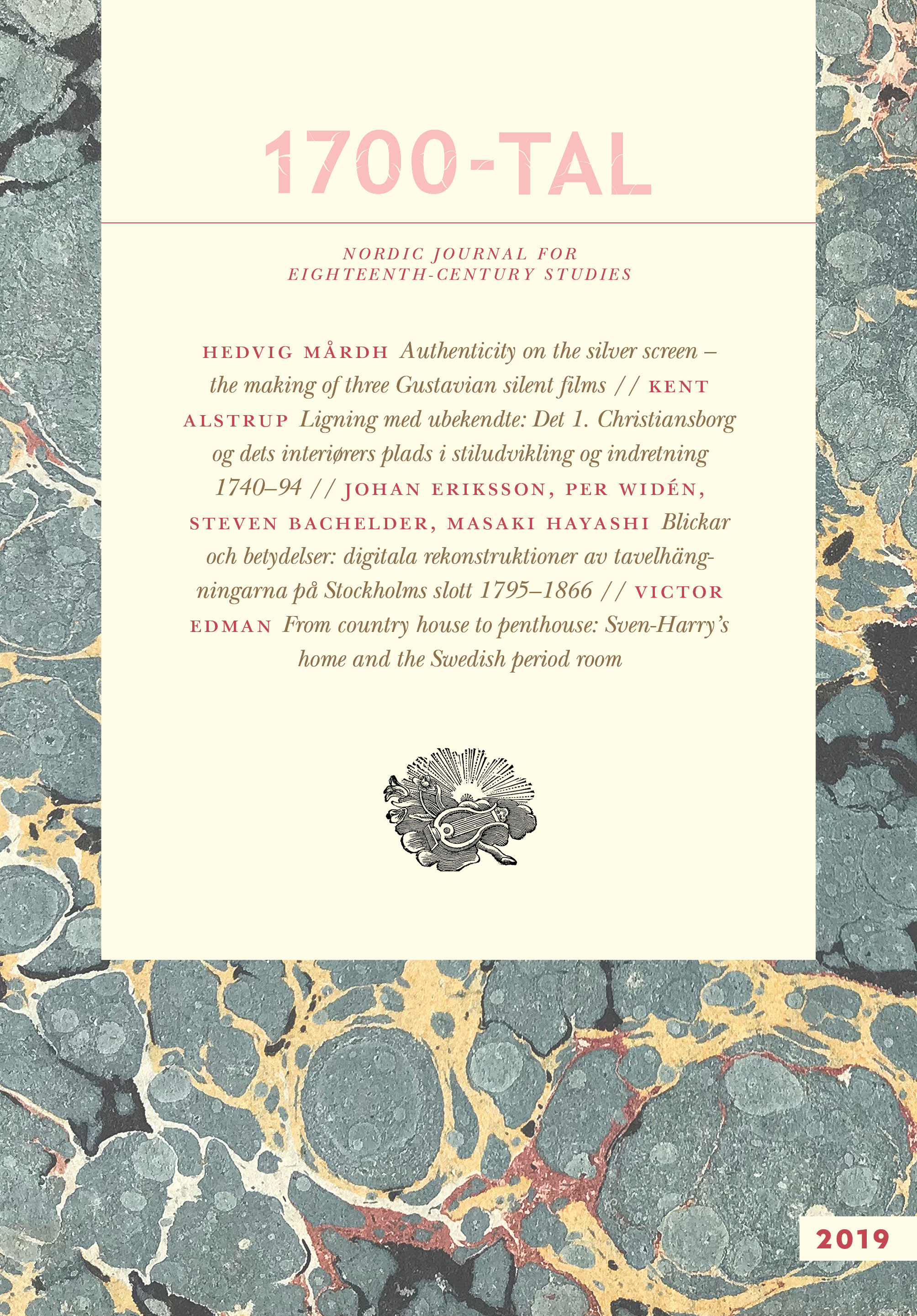Ligning med ubekendte
Det 1. Christiansborg og dets interiørers plads i stiludvikling og indretning 1740–94
DOI:
https://doi.org/10.7557/4.4880Abstract
Inaugurated in 1740, the majestic building of the new royal palace in Copenhagen would play a key role in the introduction of new stylistic waves over the next 50 years, until the palace sadly was destroyed by a devastating fire in 1794. As the title suggests, the disappearance of these interiors has left a serious lacuna in the understanding of the period’s art and architecture. All the famous architects and artists of the time worked in the palace and from this, the central monument of eighteenth-century Denmark, new ideas spread throughout the realm. A few drawings have survived, and together with the abundance of written sources, we can get a rather good impression of the character of these interiors, even to the point where it is possible to reconstruct quite a few of them in drawings. An example of this is the bedroom of the Crown Princess Marie Sophie Frederikke from 1790, from which there furthermore exist pieces of furniture and richly embroidered textiles (fig. 12-19). At the outset, the interiors of the palace were decorated in the early rococo style (figs. 4–7) by the young architects L. de Thurah and N. Eigtved, who both had recently been on long journeys in Europe, where they had studied the newest architecture. The French sculptor L.-A. Le Clerc was responsible for the design of all the ornamental work on the building, and since the ornaments played such a vital part in the concept of the whole style, Le Clerc came to play a key role in the interior design (fig. 9). Furthermore, the well-documented use of up-to-date literature about the latest developments in French architecture as well as direct artistic contact with the Court of Versailles, ensured that the interiors lived up to the standards of the time. The early variant of the classical revival, the Louis Seize, was introduced by the French architect N.-H. Jardin and later on developed further by his pupil, C.F. Harsdorff (fig. 8), aided by the talented architect and decorator C.F. Lillie. In this article, a part of the palace’s north wing is used as an example of the development of not only style and fashion, but also the different ways in which the rooms were used over the years.
Inaugurated in 1740, the majestic building of the new royal palace in Copenhagen would play a key role in the introduction of new stylistic waves over the next 50 years, until the palace sadly was destroyed by a devastating fire in 1794. As the title suggests, the disappearance of these interiors has left a serious lacuna in the understanding of the period’s art and architecture. All the famous architects and artists of the time worked in the palace and from this, the central monument of eighteenth-century Denmark, new ideas spread throughout the realm. A few drawings have survived, and together with the abundance of written sources, we can get a rather good impression of the character of these interiors, even to the point where it is possible to reconstruct quite a few of them in drawings. An example of this is the bedroom of the Crown Princess Marie Sophie Frederikke from 1790, from which there furthermore exist pieces of furniture and richly embroidered textiles (fig. 12-19). At the outset, the interiors of the palace were decorated in the early rococo style (figs. 4–7) by the young architects L. de Thurah and N. Eigtved, who both had recently been on long journeys in Europe, where they had studied the newest architecture. The French sculptor L.-A. Le Clerc was responsible for the design of all the ornamental work on the building, and since the ornaments played such a vital part in the concept of the whole style, Le Clerc came to play a key role in the interior design (fig. 9). Furthermore, the well-documented use of up-to-date literature about the latest developments in French architecture as well as direct artistic contact with the Court of Versailles, ensured that the interiors lived up to the standards of the time. The early variant of the classical revival, the Louis Seize, was introduced by the French architect N.-H. Jardin and later on developed further by his pupil, C.F. Harsdorff (fig. 8), aided by the talented architect and decorator C.F. Lillie. In this article, a part of the palace’s north wing is used as an example of the development of not only style and fashion, but also the different ways in which the rooms were used over the years.









